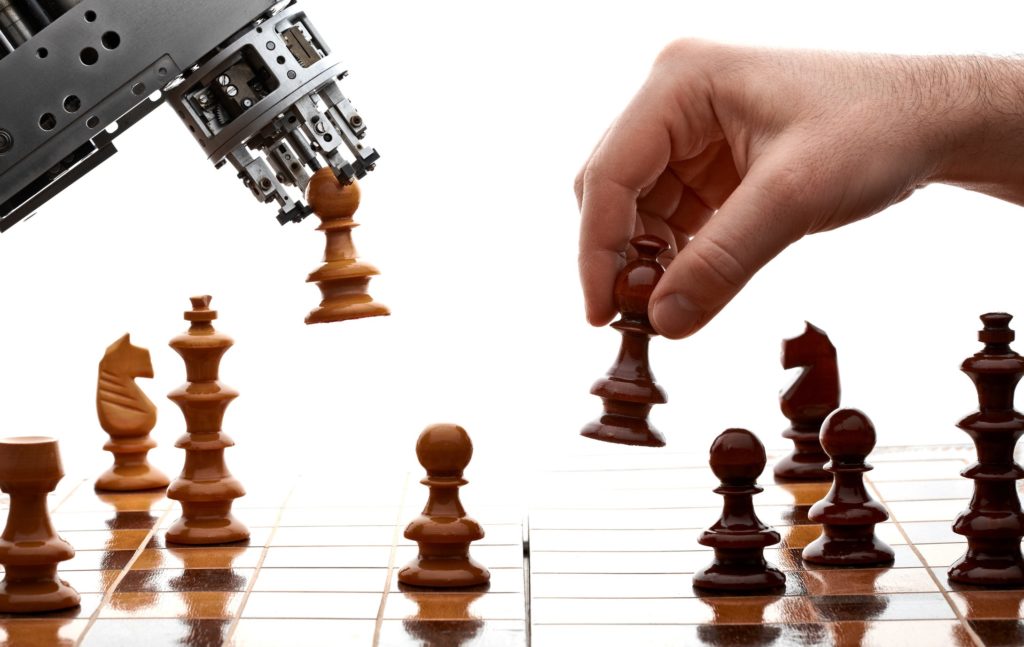We seem to hear about Artificial Intelligence (AI) in relation to almost every sector of business. When it comes to Marketing AI has already started transforming the world we live in. How to take advantage of new technology?
One of the biggest areas where AI can help marketers is A/B testing. Before we dive into the implementation, let’s get the basics right.
Defining A/B Testing:
Let’s imagine you run a Software-as-a-Service (SaaS) start-up. You have a landing page where you get people to sign-up for a newsletter by entering their email address.

Not everyone who visits your site will sign-up. Suppose you as a marketer have identified problems with your landing page (not responsive, slow load time, bad copy, etc.). To solve these problems, you have created a new landing page. You have an idea, which I am going to call hypothesis, why the old page is not performing. The new page has a different layout, text or image which you believe might be the reason why you were not getting enough sign-ups.
You as a marketer want to measure which page is better, using data and math.
Let’s imagine you tested both sites and each site had 100 visitors. Now you take the data and compare the conversion rate. Let’s say page A had 20 subscribers and page B had 45 subscribers. Based on that result you know now that page A has a conversion rate of 20% and page B has a conversion rate of 45%.
In other words, A/B testing is a procedure to test different websites or adds, etc. and assess which one is more efficient.
Defining AI:
“Artificial intelligence (AI) is an area of computer science that emphasizes the creation of intelligent machines that work and react like humans.” – TechOpedia
The version of AI we’re most familiar with today is that of computers performing tasks that normally require human intelligence.
Let’s take an example from DeepMind. DeepMind is a company which focus to solve intelligence using Reinforcement Learning and Deep Neural Networks.

What is Reinforcement Learning?
The story of Reinforcement Learning (RL) goes all the way back to AI, animal psychology and control theory. At the heart of it, it involves an autonomous agent like a Person, Animal or a Robot. An Agent lives in the environment and has a specific goal to achieve a predefined task. The environment itself consists of many states which an agent can experience. Here is a simple scheme of how reinforcement learning works. The more the agent is exposed to a certain situation and their reactions are rewarded or penalised the more it learns. Eventually the Agent finds the optimal way of executing a task to the level of a human or even more efficient.

Applying AI for A/B Testing
Until now A/B testing has been a time-consuming process with almost always a bit of daunting results. It is hard for marketers to assess more than one difference at a time when testing. For example, if you are testing a page with a large button and a page with a small button it’s easy to see what makes one of them perform better. However, if you also have different images on each page you would never be sure whether it is the image or the button that makes one of the pages perform better.
AI powered tools like Sentient can test thousands of different features at the same time and estimate the winning content dynamically. According to the CMO of Sentient, Jon Epstein, after one company used the tool to test 380,000 form designs, its lead form conversion rate increased by 45 percent.
At the fast arrival of AI in the marketing process, many professionals feel threatened by the technology, as one day human labour might not be necessary. Companies offering AI solutions argue that technology will juts replace the tedious repetitive work form marketing and let people concentrate on the creative process. I stay an optimist and believe that machines can make our life easier and humans will have even better chance to unleash their potential.

